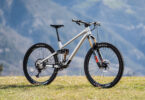With the new Epic World Cup S-Works, Specialized claim to have achieved the impossible, fulfilling the dream of every XC rider: creating a bike that combines the efficiency of a hardtail with the composure and control of a full-susser. We tested Specialized’s brand’s new XC weapon on the (mostly) dusty trails around Girona.
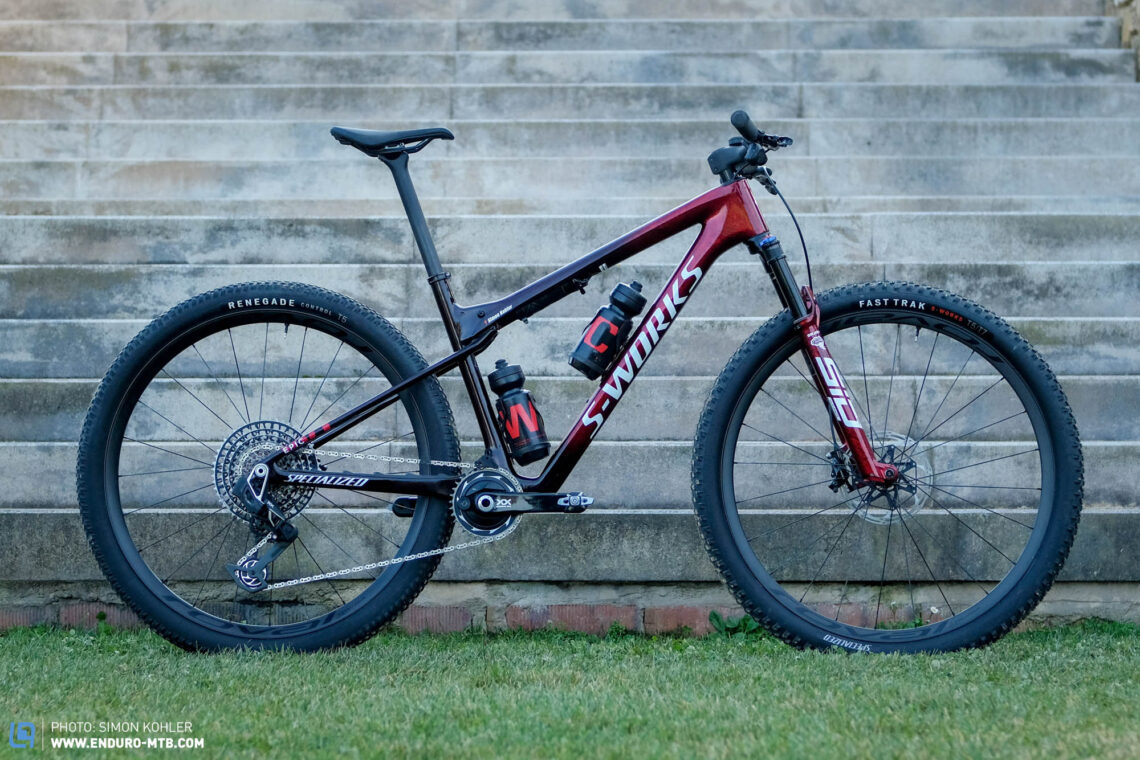
Specialized are known for constantly pushing their boundaries and creating ground-breaking technologies. Their engineers seem to be particularly passionate about developing unique new suspension systems. Not even half a year ago, the American bike colossus launched its brand-new gravel rig, the Specialized Diverge with an innovative, ground-breaking suspension technology. Fast forward six months and Specialized are gifting the latest iteration of the Epic World Cup model with a new proprietary shock concept to celebrate the Epic’s 20th anniversary in great style. However, the new suspension system is completely different from the Diverge’s Future Shock, and despite looking fairly similar, has nothing to do with Trek’s Supercaliber suspension system. Specialized teamed up with suspension giant RockShox for the occasion, who helped them develop a new rear suspension technology that generates 75 mm of rear travel. The special feature of the new system is that it forgoes a lockout function and only requires minimal sag to work – between 0 and 10 %, even with World Cup racers. The rear suspension is complemented by a 110 mm fork, which brings the total weight of the bike to 9.5 kg in size M. Specialized are determined to send the good-old hardtail XC racer into a deserved retirement, replacing the high-end Epic hardtail models with the new bike. However, the current Epic full-suspension model is still available for purchase. There are two different variants of the new Epic World Cup model, the S-Works and the Pro, which have different specs and frames with distinct carbon lay-ups. Thanks to higher-quality carbon fibre, the flagship S-Works model provides the same degree of stiffness as the Pro frame while saving 50 g weight. Retailing at € 12,500 and € 9,000, respectively, neither of the new Epic models are cheap.

The Specialized Epic World Cup 2023 in detail
The new Epic World Cup S-Works relies on the same carbon technology as Specialized’s super-light road bike, the Aethos. Both the frame’s shape and lay-up have been tested in countless simulations, which allows engineers to compare thousands of virtual frames. However, the developers’ main goal wasn’t to develop the lightest frame possible, but one that ensures the highest possible level of stability while at the same time flexing as little as possible – this is meant to ensure predictable, precise handling.

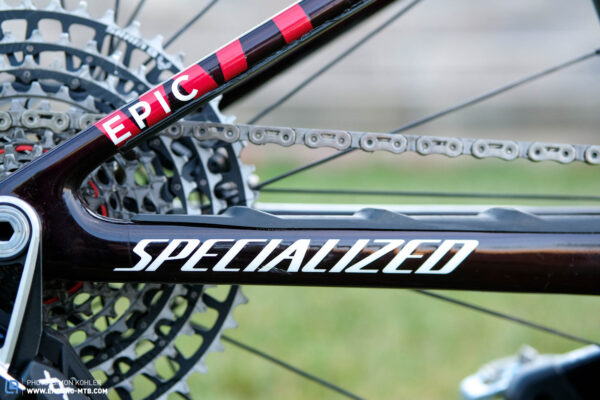
The latest iteration of the Epic World Cup boasts a fresh new look. The square-edge frame silhouette is an ensemble of straight lines, from the seat stays to the top tube and seat tube, all topped by the semi-integrated shock, which is hiding under the top tube. The rear triangle has remained unchanged, relying on the same linkage-driven single pivot with flex stays as its predecessor. However, the shock link is now slightly tilted, while the small rocker arm has moved from the seat tube to the top tube. The rear brake line runs through the headset directly into the frame, ensuring a tidy look without making it difficult to adjust the cockpit. Moreover, the system allows you to run short hoses, because the port rotates with the handlebars, removing the need for extra slack to allow the bars to turn. There are two bottle cage mounts in the main frame in all sizes, one on the seat tube and one on the down tube. To keep the weight down, Specialized have dispensed with their proprietary SWAT storage compartment in the down tube – and a tool mount is missing too! Fortunately, Specialized didn’t save any weight on the ribbed chainstay protector, which effectively prevents chain slap.
The new suspension technology behind the new Specialized Epic World Cup 2023
A closer look at the suspension of the Specialized Epic World Cup reveals that there are significant differences compared with its predecessor, the most obvious being the RockShox SID WCID shock. The WCID acronym stands for World Cup Integrated Design, which indicates that the shock was developed specifically for the Epic World Cup.
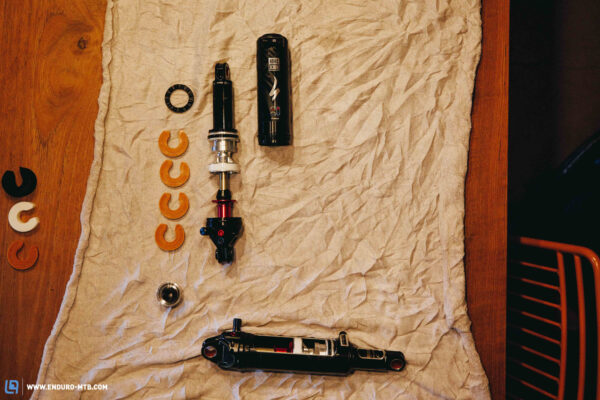
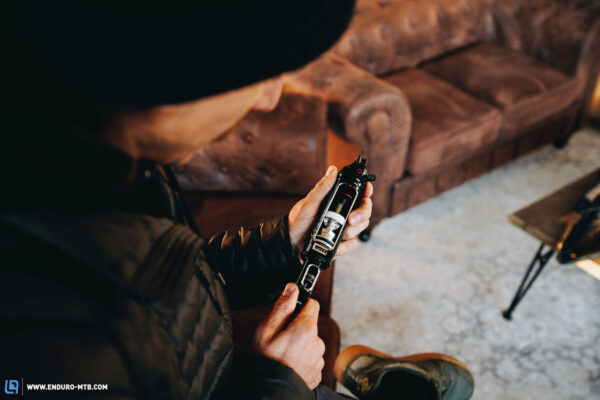
The special thing about the RockShox SIDLuxe WCID shock is that it allows you to adjust the pressure in both the positive and negative air chambers independently. While the pressure in the positive chamber is adjusted with a shock pump, the negative chamber uses an interesting solution relying on ambient air pressure. There are three main “modes”, but these have infinite adjustment options in between them. To adjust the pressure in the negative chamber, you’ll just need something small and pointy like a 2 mm allen key to open a small valve, allowing air to flow into the negative chamber. Then, simply compress the suspension to the desired position and close the valve – fully extended will give you the “Firm” mode with no sag, and fully compressed gives you the 10% sag “Active” mode. That said, switching from the climbing to the descending mode does require an extra step, as you’ll need to deflate the positive chamber before you can fully compress the suspension – not something you’ll want to do on-the-fly part way through a race. As with a conventional air shock, the pressure in the positive chamber is set for the rider’s weight and riding style, while the negative chamber allows you to adjust the sensitivity and feel. Bear in mind, a change to the negative chamber might require a compensatory change to the pressure in the positive chamber to suit the different riding characteristics.
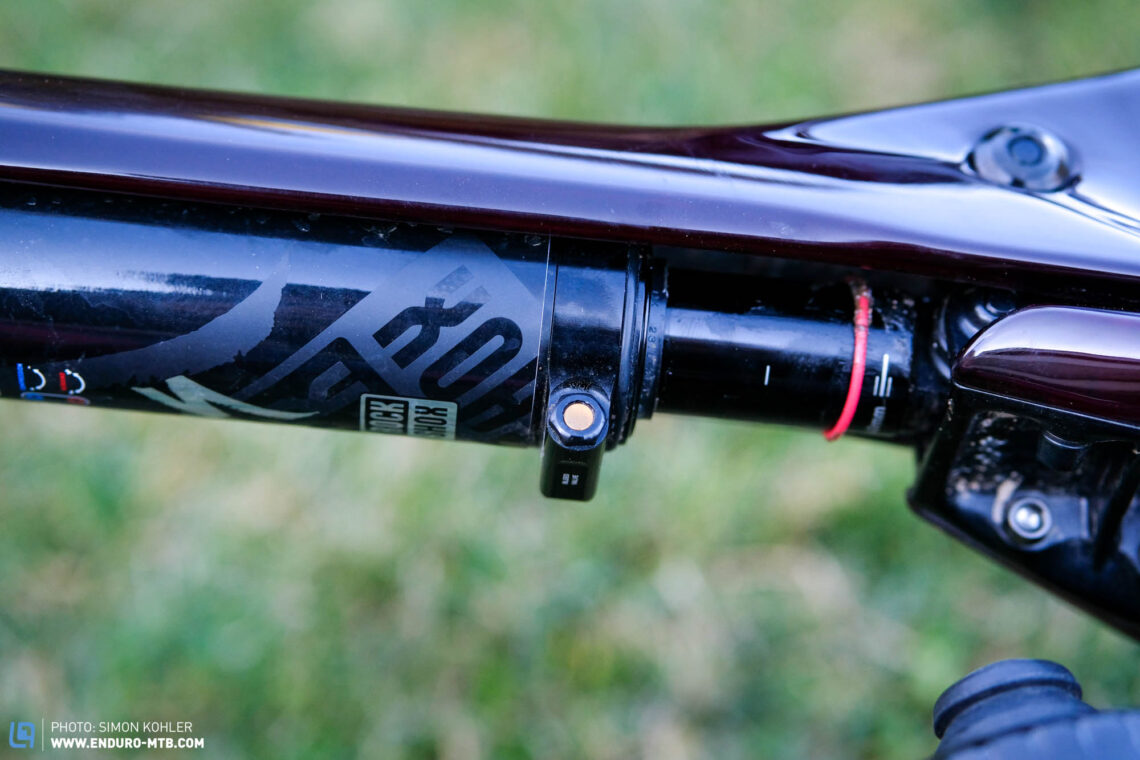
The different settings of the RockShox SID WCID shock
In the Firm setting, the negative air chamber is completely empty. In the first step, the positive chamber of the damper is inflated with the recommended pressure and then the equalisation valve is opened. This causes excess air to flow out of the negative chamber, which will ensure the stiffest setting possible and thus a setup with virtually no sag. Simply put, the Firm setting is the one that requires the most force to get the shock moving. While the initial transition is quite abrupt, once the shock breaks away it releases its travel rather eagerly.
At the other end of the spectrum sits the Active mode. When opening the valve with the shock fully compressed, the negative chamber fills up to its maximum air volume. While this is the plushest possible setting, it still has only about 10% sag. This mode requires the least breakaway force and provides the most linear response, thus ensuring the most conventional shock feel of all the settings.
Between these two antithetical settings, however, you can adjust the shock’s characteristics infinitely by opening the valve of the negative chamber while holding the shock in different positions. To get to the medium setting, for example, you’ll have to compress the shock halfway. A small line on the shaft indicates the mid stroke, making setup easier.
The suspension of hte Specialized Epic World Cup – stiff without a lockout
Regardless of the setting, the RockShox SIDLuxe WCID shock is always significantly more progressive than any conventional shock. Due to the small negative chamber, the spring curve has a strong initial breakaway force, which is required to move the shock in the first place. However, Specialized don’t do this to provide as linear a curve as possible, which is currently popular amongst downhill-oriented bikes with air shocks, but rather to ensure a stable pedalling platform. In a nutshell, lockout mode is achieved through the behaviour of the air spring rather than through restricting oil flow inside the shock. This allows the engineers to replace a conventional hydraulic lockout simply by altering the behaviour of the air spring. As a result, the RockShox SID WCID shock employs fewer parts, whereby the higher oil flow allows for even finer damping adjustments. In addition, the shock has a relatively long stroke, which provides a high shaft speed for a given amount of travel, which in turn makes it easier to fine tune the damping settings, because the oil flow increases too. The finely tunable damping makes it easier to control support in the mid stroke and at the end of the stroke. These are all aspects that usually cause trouble with shocks with a small negative chamber. In addition, a rubber bottom-out bumper takes the edge off hard hits.
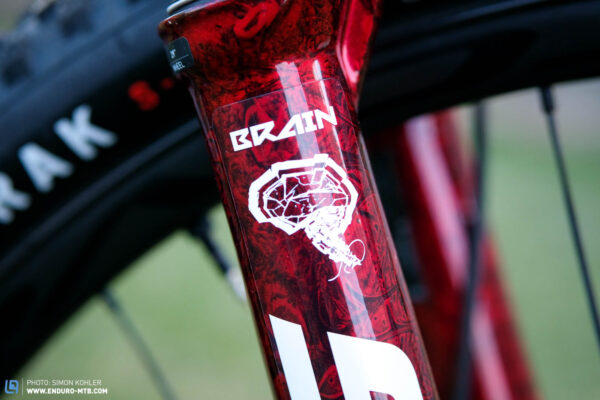
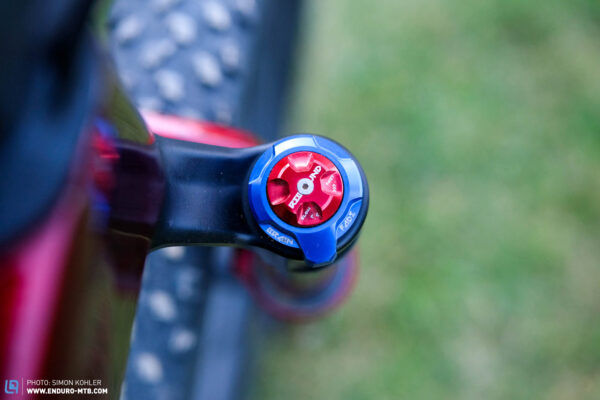
Like its predecessor, the new Epic relies on a fork with Brain technology, which employs an inertia valve that closes the compression unit, locking out the fork when needed. This valve remains closed when the rider applies force on the handlebars with their weight, but opens when the wheel hits an obstacle, releasing 110 mm of travel. The force needed to open the valve can be adjusted at the top via the Brain Fade knob. The fork’s compression damping, on the other hand, can’t be adjusted and is slightly softer compared to its predecessor.
The spec of the Specialized Epic World Cup S-Works 2023
As already mentioned, RockShox supply the suspension. However, this isn’t an off-the-shelf fork/shock combo, but an exclusive setup developed specifically for the Specialized Epic World Cup S-Works that consists of a 110 mm SID SL Ultimate Brain fork and 75 mm SID WCID shock. The American component giant also provides the SRAM drivetrain and brakes. As expected, the S-Works model comes equipped with top-tier Level Ultimate Stealth two-piston brakes with a 180 mm rotor at the front and 160 mm disc at the rear. Heavy and aggressive riders who want more braking power on long descents should upgrade to bigger rotors. The Stealth brakes are SRAM’s latest stopper model, which position the levers closer to the handlebars and allows you to route the cables neatly through the headset. A 12-speed SRAM Eagle Transmission XX SL drivetrain enables wireless shifting and features an integrated power meter. The special feature of SRAM’s new Transmission drivetrain is that it forgoes a mech hanger altogether, attaching directly to the frame. Moreover, it allows you to shift under load without wasting power. If you want to know more about the revolutionary shifting system, you can read our review here.
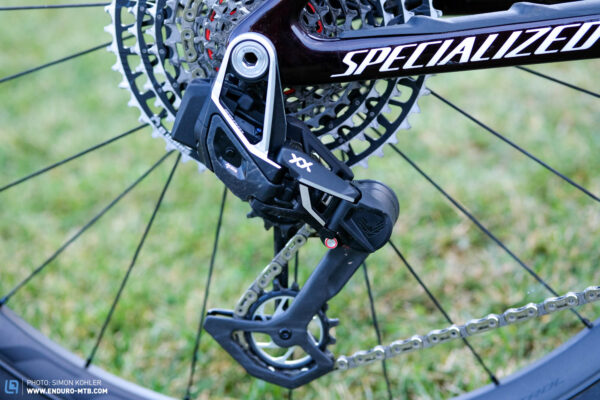
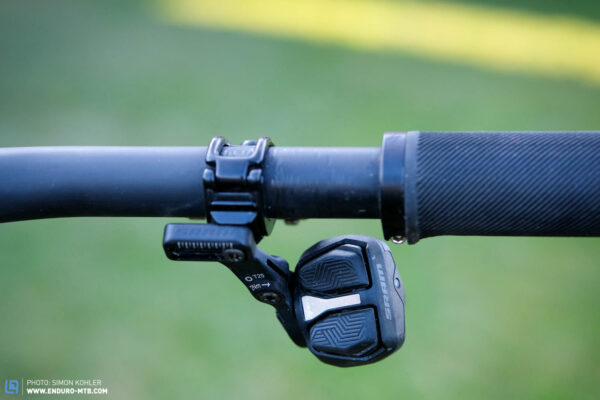
For the rest of the spec, Specialized rely on many of their in-house components, employing mainly Roval’s Control SL line. The one-piece cockpit, which makes its debut on the Epic World Cup, consists of 760 mm handlebars and a 70 mm stem (60 mm in size S). Moreover, Specialized use a generous backsweep to enable a comfortable riding position for long days in the saddle. Roval also supply the Control SL carbon seatpost, which unfortunately triggers unpleasant OTB moments on descents – we urge you to upgrade to a dropper post as soon as you can! Dropper posts have long established themselves in the XC circuit, and most racers, including Specialized’s team riders, are happy to compromise on weight to get the extra freedom of movement and safety downhill. We’ve tested the bike both with and without a dropper and can assure you that a lowerable saddle massively improves riding fun and control.
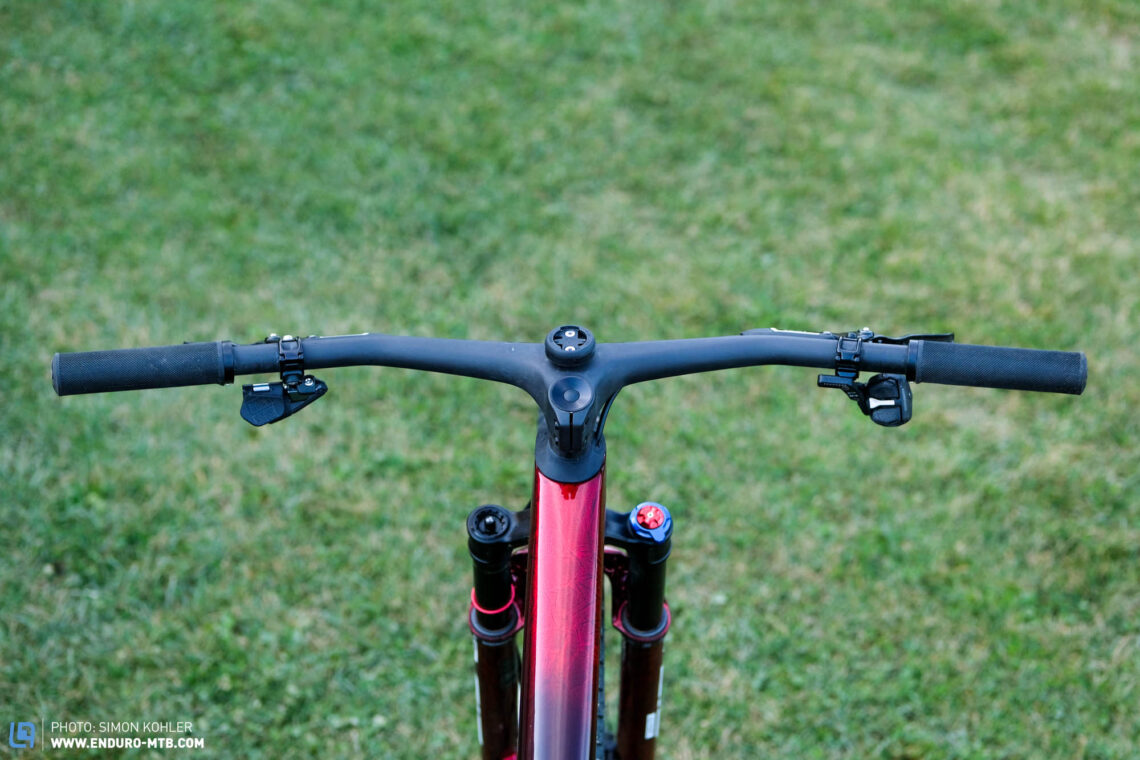
For the wheels, Specialized rely on their own brand 29″ Control SL carbon wheelset and matching tires, combining a 2.3″ Renegade with Control casing and hard T5 rubber compound at the rear and a 2.3” Fast Trak with the light S-Works casing and slightly softer T5/T7 rubber compound at the front. This is a fast-rolling, lightweight racing tire combo, so you might be better off upgrading to a more robust casing unless you have a mechanic looking after you on every ride.
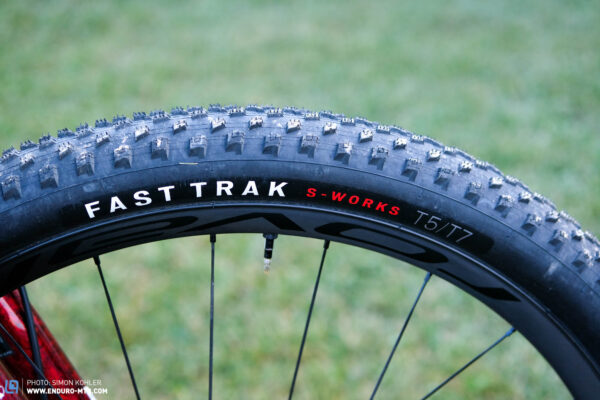

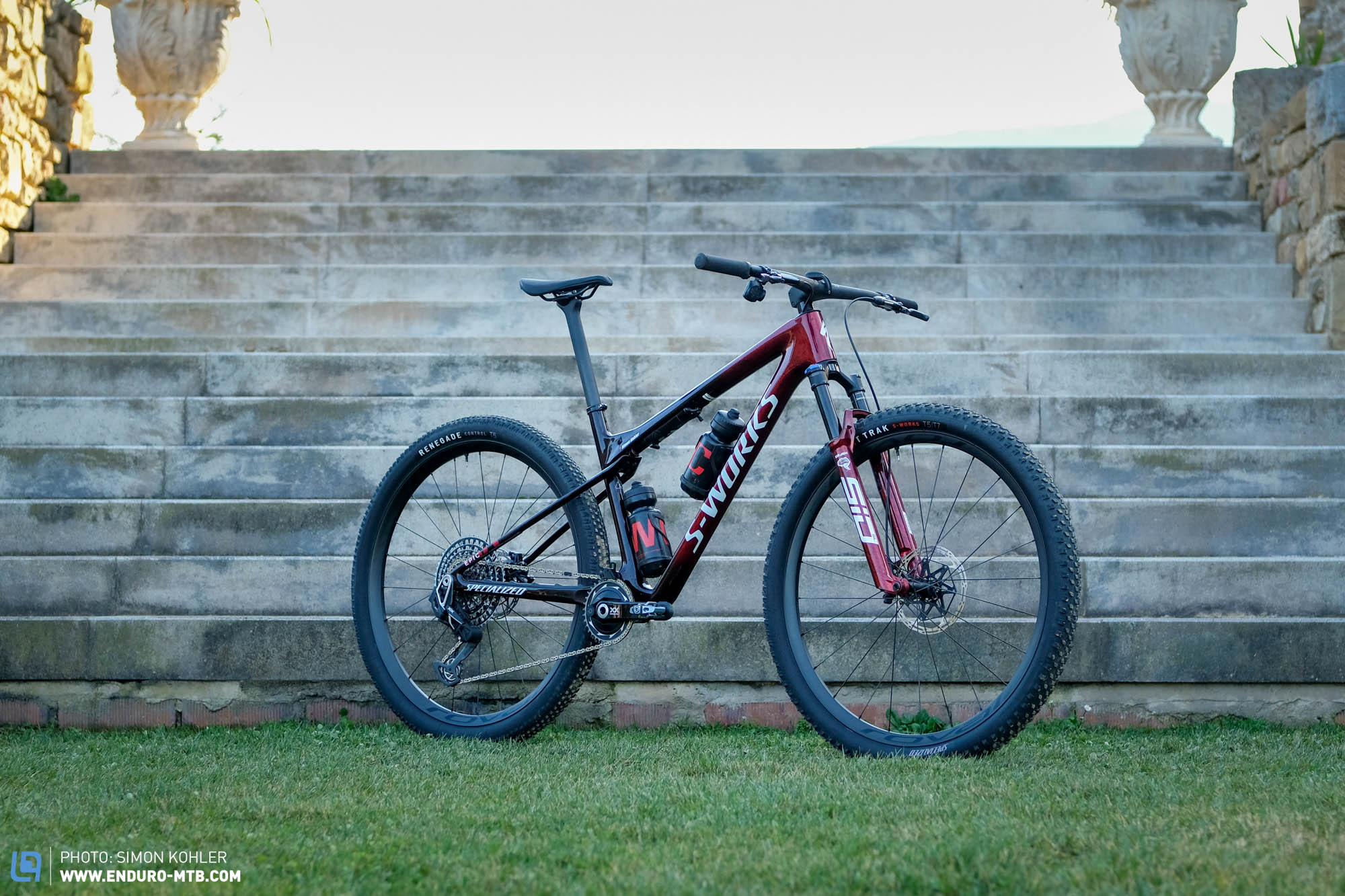
Specialized Epic World Cup 2023
Specifications
Fork RockShox SID SL Ultimate Brain 110 mm
Rear Shock RockShox SID WCID 75 mm
Seatpost Roval Control SL - mm
Brakes SRAM Level Ultimate Stealth 180/160 mm
Drivetrain SRAM Eagle Transmission XX SL 1x12
Stem Roval Control SL 70 mm
Handlebar Roval control SL 780 mm
Wheelset Roval Control SL 29"
Tires Specialized Fast Trak S-Works T5/T7/Specialized Renegade Control T5 2.3"/2.3"
Technical Data
Size XS S M L XL
Weight 9.5 kg
The geometry of the Specialized Epic World Cup 2023
The Specialized Epic World Cup is available in 5 sizes, XS to XL, whereby size XS is only available as a frameset. Although the 74.5° seat angle and 66.5° head angle look rather slack on paper, they hardly change as you sit on the bike, because the suspension has virtually no SAG. Our size L test bike combines 465 mm reach and a 450 mm seat tube, which might look long at first but is actually alright for a bike that doesn’t require a long dropper post. Chainstay length is 430 mm across all sizes.
| Size | XS | S | M | L | XL |
|---|---|---|---|---|---|
| Top Tube | 541 mm | 581 mm | 612 mm | 641 mm | 670 mm |
| Seat Tube | 392 mm | 395 mm | 410 mm | 450 mm | 500 mm |
| Head Tube | 93 mm | 93 mm | 95 mm | 110 mm | 125 mm |
| Head Angle | 66.5° | 66.5° | 66.5° | 66.5° | 66.5° |
| Seat Angle | 74.5° | 74.5° | 74.5° | 74.5° | 74.5° |
| BB Drop | 61 mm | 58 mm | 57 mm | 57 mm | 57 mm |
| Chainstay | 430 mm | 430 mm | 430 mm | 430 mm | 430 mm |
| Wheelbase | 1089 mm | 1124 mm | 1150 mm | 1181 mm | 1212 mm |
| Reach | 380 mm | 415 mm | 440 mm | 465 mm | 490 mm |
| Stack | 603 mm | 600 mm | 600 mm | 614 mm | 628 mm |

The Specialized Epic World Cup S-Works 2023 o the trail
As soon as you swing your leg over the saddle, the Specialized Epic World Cup S-Works is surprisingly comfortable for a mean XC machine. Of course, the position is sporty, but still pretty comfortable. When riding in Firm mode, the suspension doesn’t budge one millimetre and feels pleasantly stiff. Even when sprinting out of the saddle, the rear end remains firm and only starts moving when you pedal hard. Overall, the Specialized Epic World Cup S-Works is eerily similar to a hardtail XC bike.
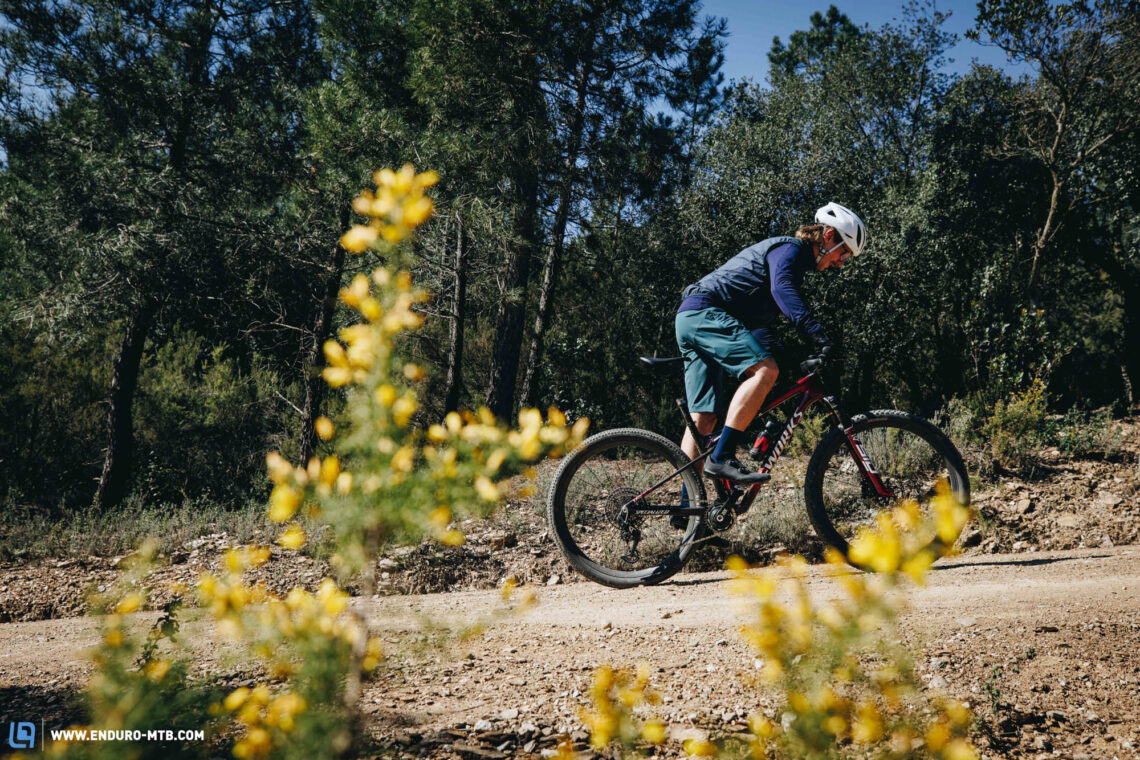
When you drop from a gravel path into a rougher trail, the suspension opens without hesitation, reliably absorbing impacts, provided the hits are big enough to overcome the suspension’s high breakaway force. When switching to Active mode, the Epic is far more comfortable, with the suspension sucking up even small chatter far more efficiently. On the downside, however, the suspension also bobs a little, decreasing the rear end’s excellent efficiency.

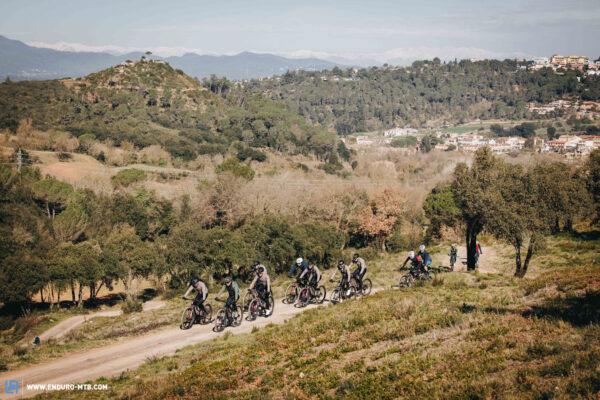
When you turn its nose into the valley, the Epic World Cup is easy and intuitive to ride, but provides very direct feedback due to the small amount of travel and light system weight. Despite its conservative travel, however, the Epic feels composed and inspires huge amounts of confidence – provided you don’t push it too much beyond its limits. Firm mode provides the firmest ride, struggling to filter out small chatter and vibrations and quickly making you feel tired. When the going gets rough, the suspension opens up and eagerly releases its travel, although with the tendency of rushing through the mid-stroke pretty quickly. Since you never know whether the shock is going to give you a hardtail or sofa feeling, it’s difficult to assess what the suspension is doing in this setting.
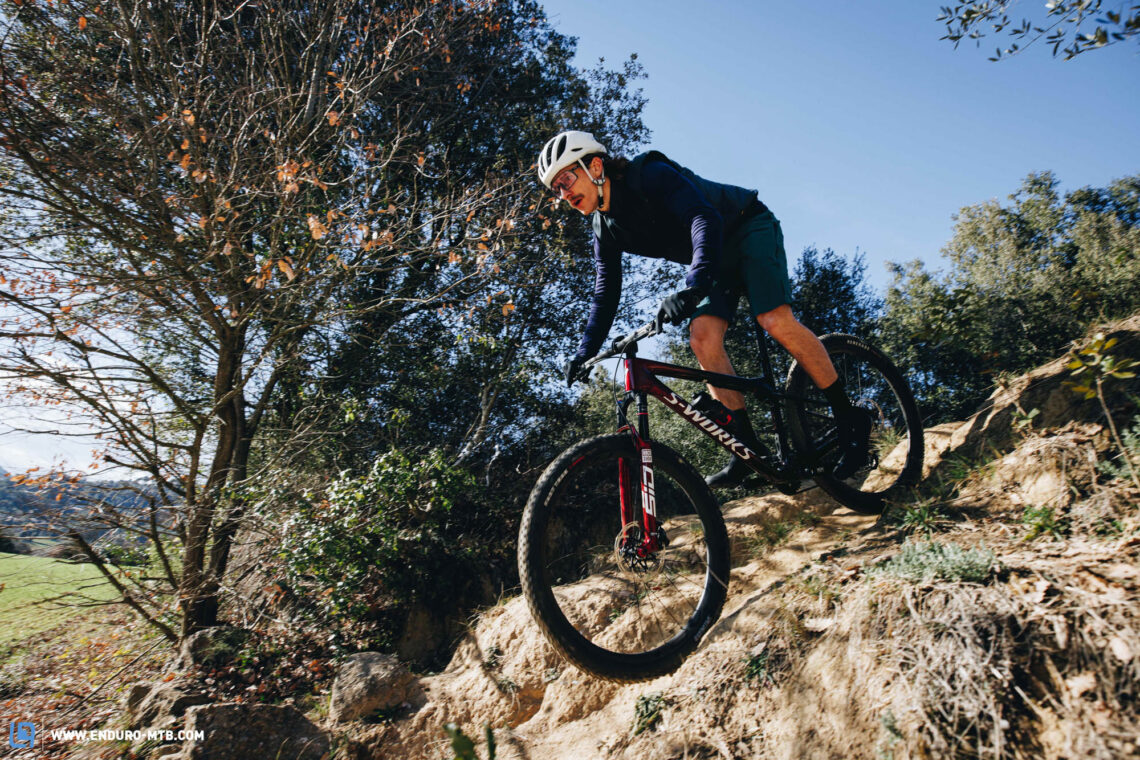
With the shock in Active mode, the suspension responds more sensitively and the line between firm and soft is far less defined. In this setting, the suspension generates more traction and provides better small bump sensitivity, ensuring far more predictable handling in the process. Active mode also improves mid-stroke support, albeit only to a small extent. The fork is on the soft side too, providing little mid-stroke support on descents. Although the Epic feels like a mean flow trail rocket, it offers too little support in nasty compressions and berms, sinking deep into its travel, both at the front and rear. That said, the rubber bumper prevents the rear end from bottoming out harshly. We found that a compromise between the Medium and Firm setting provided a great balance between efficiency and predictability.
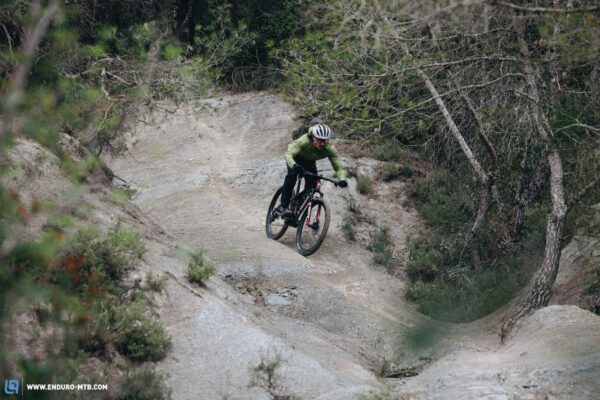
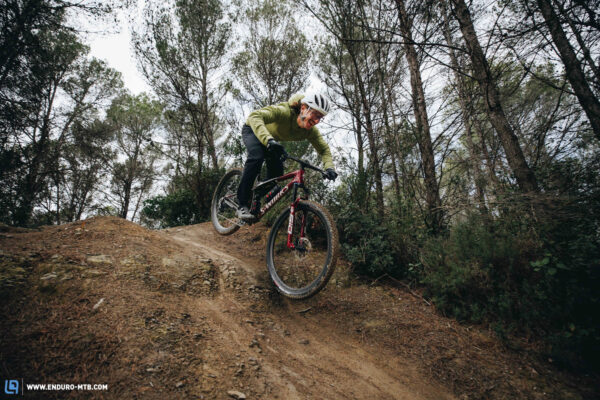
Who should take a closer look at the Specialized Epic World Cup 2023?
The Epic World Cup is clearly advertised as one of Specialized’s XC racers. It’s fairly light, and the stiff rear suspension combined with the confidence-inspiring downhill character are ideal for its intended use. However, the potential of the Epic World Cup doesn’t end here! Lightweight XC full-sussers have already proven that they can keep up with modern gravel bikes on epic backcountry adventures – find out more about this in our sister magazine GRAN FONDO. Furthermore, with its comfortable pedalling position and efficient suspension, the Epic World Cup is also an excellent companion for long trail sessions. The adjustable suspension lets you transform the Epic from an efficient long-distance runner to a comfortable mini trail bike, allowing you to fine-tune your ride depending on your needs and preferences – we encourage you to change the setting from time to time! One day you can chase the roadies in the Firm setting, and the next day you can shred your home trails in the Active setting – awesome!
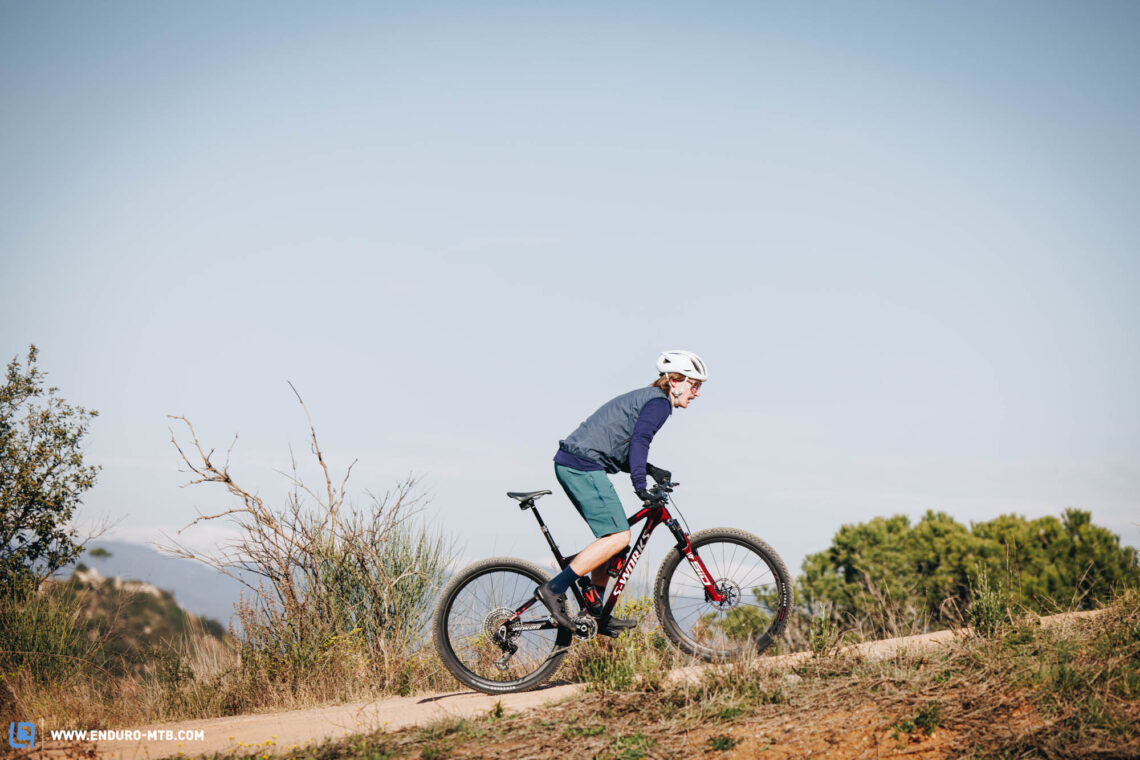
Our conclusions about the Specialized Epic World Cup 2023
The Specialized Epic World Cup S-Works is a high-performance XC racer with exciting suspension technology that allows you to fine-tune your ride and as a result covers a huge range of applications. While you can tell that the new Epic was designed for efficiency rather than trail performance, the intuitive handling and composed character also make it a great option for trail riding. In addition, the efficient suspension and comfortable pedalling position make it suitable for all-day adventures.
Tops
- Exciting suspension concept
- Firm, efficient pedalling performance without lockout
- Impressive trail performance
- Wide range of applications
Flops
- Doesn’t come standard with a dropper post
- Suspension offers little mid-stroke support

For more info, visit Specialized’s website.
Did you enjoy this article? If so, we would be stoked if you decide to support us with a monthly contribution. By becoming a supporter of ENDURO, you will help secure a sustainable future for high-quality mountain bike journalism. Click here to learn more.
Words: Simon Kohler Photos: Specialized





